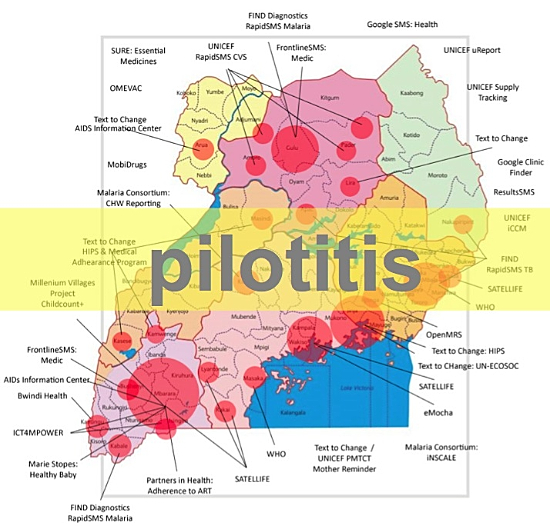Practical Insights on Pilotitis

What is Pilotitis in ICT4D?
Pilotitis in the context of ICT4D (Information and Communication Technology for Development) refers to a common phenomenon where ICT projects targeting social or economic development are frequently initiated as pilots or small-scale trials but struggle to transition into larger, sustainable implementations.
This term is often used critically to highlight a recurring challenge within the development sector, where innovative projects demonstrate potential in controlled, small-scale settings but fail to achieve broader impact due to various constraints.
What Are the Causes of ICT4D Pilotitis?
The root causes of pilotitis are multifaceted, but there are four common causes.
- Financial sustainability is a primary concern, as pilot projects often rely on initial funding from grants or donors that may not be available for long-term scaling.
- There may be a lack of integration with local government policies or insufficient alignment with the needs and capabilities of the target communities, leading to a mismatch between the project’s objectives and the actual demand or utility.
- Technological infrastructure may not support scaling up due to limitations in connectivity, electricity, or maintenance capabilities in the targeted areas.
- Projects can suffer from insufficient planning for scalability from the outset, lacking a clear vision for how a successful pilot could be expanded in terms of both geography and functionality.
The criticism encapsulated by the term pilotitis does not merely point to the failure of projects to expand but also to a broader issue within the ICT4D sphere of not learning from or adapting to the reasons behind these failures.
Overcoming ICT4D Pilotitis
As such, overcoming pilotitis requires a more holistic approach to project design and implementation, emphasizing sustainability, scalability, local ownership, and alignment with broader development goals from the very beginning.
This involves not only technological innovation but also a deep understanding of the social, economic, and political contexts in which these projects are deployed.
Blockchain technology has been lauded as a solution to longstanding development issues, with proponents claiming it can bring unprecedented transparency, accountability,...
Countries from low-and-medium income sectors have faced several long-standing challenges, including poverty, unemployment and an overburdened healthcare system....
Published on: Nov 16 2023 by Guest Writer - Comments Off on Moving From e-Chaos to Uganda’s New Digital Health Strategy
In May 2023, the Uganda Ministry of Health (MOH) inaugurated the National Health Information and Digital Health Strategic Plan. Aligned with the National Development...
Back in the day, One Laptop Per Child promised a digital revolution in education. By handing out “$100 laptops” to children, and for the most part sidelining...
Recently, the Digital Impact Alliance (DIAL) commissioned a Baseline ICT4D Ecosystem Study to understand the current aspects and experiences of the digital development...
Published on: Sep 20 2017 by Guest Writer - Comments Off on 4 Ways We Overcame ICT4D Pilotitis in Vietnam
We all know the dangers of “pilotitis” in the ICT4D and mHealth space. The potential for new ideas and innovations is seemingly limitless, but challenges arise...
Published on: Dec 06 2013 by Karl Brown - Comments Off on 10 Theses on Power and Efficacy of ICT4D Indulgences
I am Karl Brown, Associate Director of applied technology at the Rockefeller Foundation, and at the recent Mobiles! convening, I gave a brief talk where I highlighted...
Published on: Oct 25 2013 by Guest Writer - Comments Off on The ICT4D Funding Conundrum And Why Pilotitis Needs to Change
I am Erica Hagen and in a recent post, I talked about how effective feedback loops are close to being realized in Dar es Salaam. In this post, I discuss the challenges...
One overarching theme from the recent Mobiles! Conference was the need to get past pilotitis – the too many small projects that never scale, dying the day...
I am David McCann and when I first arrived in Uganda, I used to describe it as “the perfect storm” for aid in general, and M4D in particular. The country...











